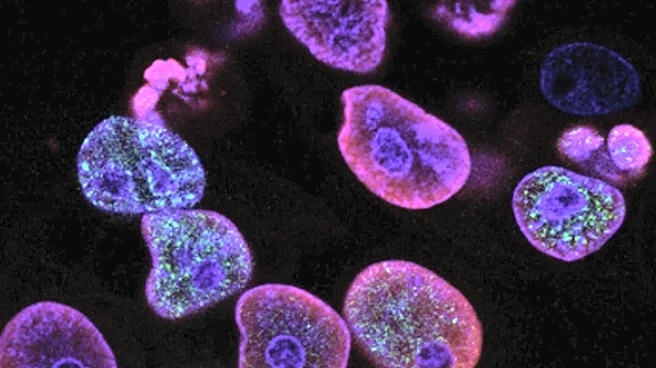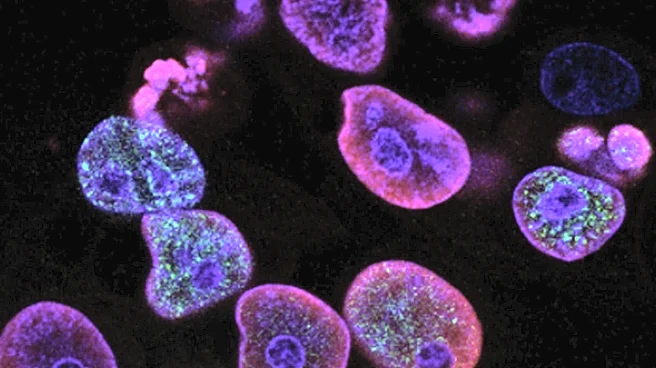What is the story about?
What's Happening?
Research has highlighted the role of TIM1+ Breg cells in mitigating myocardial ischemia-reperfusion injury (IRI). The study utilized a mouse model to demonstrate that the compound RMT1-10 can increase the number of TIM1+ Breg cells, which secrete IL-10, an anti-inflammatory cytokine. This process helps reduce myocardial infarction size and cell apoptosis, thereby protecting heart tissue from IRI-induced damage. The findings suggest that TIM1 could be a novel target for therapeutic strategies aimed at reducing inflammation and tissue damage in myocardial IRI.
Why It's Important?
The discovery of TIM1+ Breg cells' protective role in myocardial IRI is crucial for developing new treatments for heart conditions. By enhancing the body's natural anti-inflammatory response, therapies targeting TIM1+ Breg cells could improve recovery outcomes for patients suffering from heart attacks or other ischemic events. This research could lead to innovative approaches in cardiology, potentially reducing the need for invasive procedures and improving patient quality of life. The study also underscores the importance of understanding immune cell interactions in developing effective treatments for cardiovascular diseases.
What's Next?
Further research is needed to explore the therapeutic potential of TIM1+ Breg cells in human patients. Clinical trials could be initiated to test the efficacy and safety of RMT1-10 or similar compounds in reducing myocardial IRI. Additionally, researchers may investigate the molecular pathways involved in TIM1+ Breg cell activation to identify other potential targets for drug development. Collaboration between immunologists and cardiologists could accelerate the translation of these findings into clinical practice, offering new hope for patients with heart disease.
AI Generated Content
Do you find this article useful?













